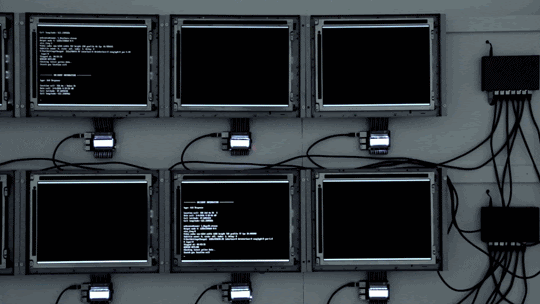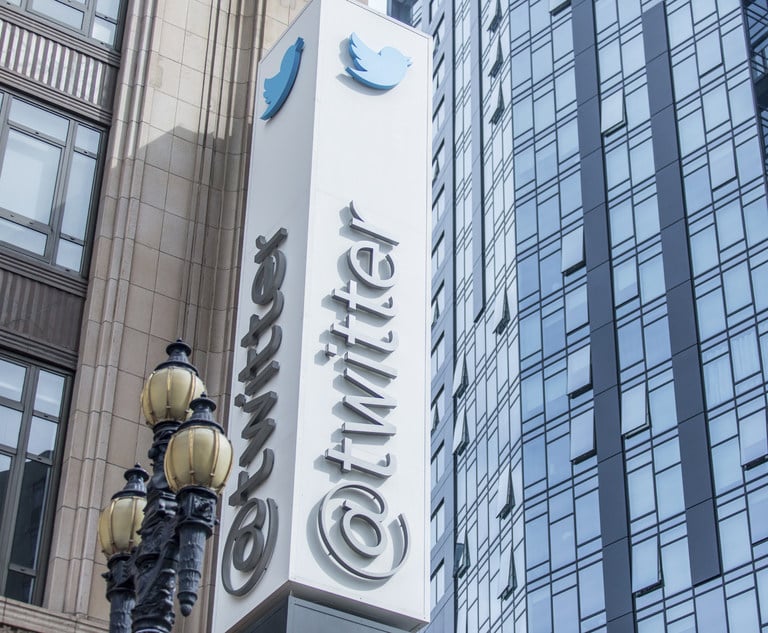What's Next: A Fight Over Surveillance Tech in a City Vowing to Reform Police + The 'Medical Gaslighting' of Black America + Punishing a Bad AI
Privacy advocates ask a judge to prohibit a California city's use of a controversial piece of surveillance equipment.
June 10, 2020 at 12:44 PM
12 minute read
Welcome back for another week of What's Next, where we report on the intersection of law and technology. Here's what we've got for you today:
>> Privacy advocates ask a judge to prohibit a California city's use of a controversial piece of surveillance equipment.
>> Medical examiners' role in explaining black deaths in police custody.
>> How do you punish an AI that commits a crime?
Let's chat: Email me at [email protected] and follow me on Twitter at @a_lancaster.
SPONSORED BY ALM PARTNERS
Microsoft Excel – Quick Reference Guide
This Microsoft Excel Reference provides shortcuts, tips, and tricks for the spreadsheet software. Use this reference to brush up on the basics and to find alternative methods to your favorite commands. This printable quick reference is yours to use, distribute, and share at your organization! READ MORE

City Embroiled in Police Controversy to Acquire Surveillance Technology
Privacy advocates in California have sought to shine a flashlight in the face of Vallejo, California, after the city announced plans to acquire controversial surveillance equipment that could be wielded by law enforcement.
On March 24, city council members agreed to purchase a cell-site simulator, a surveillance device that mimics the signals of cell towers and gathers personally identifiable information and metadata.
A week later, the Electronic Frontier Foundation (EFF) sent a letter to the city council voicing concerns that the city was not following state guidelines for the device, also known as a StingRay. On May 21, Oakland Privacy, a citizen coalition advocating for transparent privacy policies and oversight, sued the city in state court.
A little more than a week after Oakland Privacy filed its suit questioning the police department's intent to follow state law, Vallejo police faced backlash from the public for a different incident. Officer Jarrett Tonn shot and killed 22-year-old Sean Monterrosa in the midst of police brutality protests over the killing of George Floyd and widespread looting in the San Francisco Bay Area. The police department reported Tonn shot Monterrosa while he was kneeling near a looted Walgreens. Tonn shot Monterrosa five times, through the windshield of his police car, according to a news release on the incident. The police assert that they saw Monterrosa reaching for what they thought was the butt of a gun, but turned out to be a 15-inch hammer.
Monterrosa's death has put the police department under scrutiny and intervention from the California Attorney General's Office, with Xavier Becerra, the city and police agreeing to "collaborate on a comprehensive policing plan in an effort to modernize and reform VPD's policies and practices and increase public trust."
At the time of publication, a representative from the Vallejo Police Department did not answer a request asking how the department planned to reassure community members—who might feel eroding trust in police—that proper legal procedure is followed with the use of the cell-site simulators.
Back on March 30, EFF investigative researcher Dave Maass sent the letter to city council and the mayor, because the council did not announce any policy regarding the use of the device for public review, as required by the California Electronic Communications Privacy Act passed in 2015. The resolution also stated that "the chief of police has directed the creation of a usage and privacy policy for the deployment of the equipment," when state law requires that an agency such as city council develop the policy.
Maass also took issue with a non-disclosure agreement required by the cell-site simulator vendor, KeyWCorporation, saying it may interfere with the California Public Records Act. The agreement requires agencies to immediately alert the company of any records requests in order to give them time to review it. Maass said this could backlog the release of public records and lead to improper redaction.
"Privacy and access to government information are both fundamental rights established under the California Constitution," Maass wrote. "The Vallejo City Council's approval of the purchase undermines both of these rights. This is especially problematic considering the vote occurred during a period where both the State of California and Solano County have issued shelter-at-home orders, which severely curtailed the public's ability to voice objection at the meeting."
In response, Vallejo city attorney Randy Risner said the law does not require the city council to review the usage and privacy policy, and that it "is normal for the chief of police to develop administrative policies related to the operations of the police department."
Risner also wrote that Maass' concern over public records was unfounded. "A non-disclosure agreement does not change the City's obligation to timely respond to a Public Records Act request. Nor does such an agreement allow the City to redact language unless that language is specifically exempt from disclosure as set forth in the Public Records Act or other state laws," he wrote.
Vallejo police turned to Lexipol, a company that provides risk management solutions to law enforcement, first responders, prisons and governments, to help devise the privacy and usage policy. In the letter to Maass, Risner said he reviewed and confirmed the policy was compliant with state and federal law.
For the lawsuit against the city, Oakland Privacy enlisted solo practitioners Michael Risher, who spent more than a decade as staff attorney at the American Civil Liberties Union of Northern California, and Abenicio Cisneros, who specializes in public record cases.
The lawsuit alleges that "the closed process" that skipped city council review resulted in a policy that failed to comply with some of the substantive state law requirements, for instance identifying all personnel authorized to use the device.
The lawsuit asks Judge Earl Bradley Nelson of the Superior Court of Solano County to prohibit the city from acquiring or operating the technology until it is approved by the city council at a regularly scheduled meeting.
Oakland Privacy's Advocacy Director Tracy Rosenberg said the current policy allows use of the device without first getting a judicial warrant on looser terms than the law allows, by deleting the word "serious" from the term "serious bodily injury."
"The purpose of our litigation is to establish the meaning of the state StingRay law with regard to notice and City Council approval and to revise the policy sections that are out of compliance," Rosenberg said in an email. "Oakland Privacy shares the concerns of the California Department of Justice regarding the Vallejo Police Department. If the City continues on the path of acquiring this powerful surveillance equipment, it must be with full oversight, transparency and compliance with state law."
In an email statement, Risner said that his office respectfully disagrees with Oakland Privacy's legal interpretation.
"A review of the legislative history of the statute in question fully supports the City's position. We look forward to a discussion with Oakland Privacy concerning this matter," he said.
Maass said EFF is watching for evidence that cell-site simulators might be used on the recent protesters.
He said that, in the past, police have sought the device information of protesters. Back in 2017, after students at the University of California, Berkeley protested a school event headlining Breitbart News editor Milo Yiannopoulos and damaged campus property, Berkeley Police Department sought warrants for the cell phone data of certain protesters, he said.
Still, law enforcement have a host of tools at their disposal, such as handing subpoenas directly to Google or Apple, so cell-site simulator data might not be the most effective, he said.
"I don't want to spread around fear that police are hacking into people's phones with cell-site simulators, but I also don't want to rule out the possibility and give a false sense of security," he said. "Because if it's not a cell-site simulator, it could be a number of other tools."
 Osagie K. Obasogie, Haas Distinguished Chair and Professor of Bioethics, Joint Medical Program, UC Berkeley School of Public Health.
Osagie K. Obasogie, Haas Distinguished Chair and Professor of Bioethics, Joint Medical Program, UC Berkeley School of Public Health.
How Medical Evidence is Turned Against Victims of Police Brutality
In cases of police brutality gone viral, medical examiners are telling us that we aren't seeing what we think we're seeing on our phones, according to Osagie Obasogie, the Haas Distinguished Chair and professor of bioethics at the University of California, Berkeley.
During a webinar on Race and Policing hosted by Berkeley Law, Obasogie raised the issue of how law enforcement and their medical colleagues place "the problem of black death on the anatomy and pathology of black people rather than the abuse inflicted by police officers."
Obasogie, who received his law degree from Columbia Law School and researches Constitutional law, bioethics and sociology of law, said that the killing of George Floyd once again illustrated a phenomenon his colleague calls "medical gaslighting."
In the criminal complaint against Derek Chauvin, the former Minneapolis police officer charged with killing Floyd, the medical examiner reported that the investigation "revealed no physical findings that support a diagnosis of traumatic asphyxia or strangulation."
Ultimately, the final report from the medical examiner's office ruled that Floyd's cause of death was homicide. But the initial report shows how medical findings are presented to raise doubt about the responsibility of police officers, he said.
The criminal complaint also noted that Floyd had "underlying health conditions including coronary artery disease and hypertensiveheart disease. The combined effects of Mr.Floyd being restrained by the police, his underlying health conditions and any potential intoxicants in his system likely contributed to his death."
Obasogie said that racial and social disparities often lead to higher rates of heart disease in black communities. "But in the context of watching a man die from having a knee to his neck for nine minutes, we have to ask, 'Why does any of this matter?'" he said.
The Floyd complaint showed why the social, political and economic group conditions are brought into the conversation to explain why Floyd might be at fault for his death, versus the individual police officers, he said.
For instance, Obasogie noted that "excited delirium," a diagnosis that is not recognized by major health authorities and has roots in the crack-cocaine epidemic, has reemerged as an explanation used by police and medical examiners to explain black death in police custody.
The condition is characterized by extreme strength and aggression, and in some cases, sudden death.
The criminal complaint against Chauvin quotes one of the officers at the scene of Floyd's death as saying, "I'm worried about excited delirium, or whatever."
Obasogie said that like some prosecutors' relationship with law enforcement, medical examiners might be wrongfully working together with law enforcement against victims of police violence.
Right now, in the context of police killings, medical examiners are behaving like cops," he said. "They are part of the same blue wall of silence that uses medicine to cover up the police officers' unimaginable brutality. And our communities deserve better."

Artificial Crime and Punishment
What happens when an AI decides to commit a crime?
In his book "The Reasonable Robot: Artificial Intelligence and the Law," Ryan Abbott philosophizes over how punishment of AI could encourage socially beneficial conduct.
The target of such punishment is not the AI, said Abbott, a neutral at JAMS. It's the maker, users and developers of AI.
"Whether we want to call it punishment of an AI the same sort of way as we call it corporation, even though a corporation is composed of people, it's an emerging challenge that will be more of an issue as we have machines begin acting more and more autonomously from people, and we try limiting antisocial behavior by any entity."
The book is slated for release June 26.

On the Radar
Wine Subscription Company GC Navigates Exponential Sales Growth During COVID-19 "Lots of people think that the office environment will look radically different after COVID, but I think it's too early to know what the long-term impact is going to be for certain," said Matt Thelen, Winc general counsel and senior vice president of corporate development. "Continuing to drive performance through a massive business disruption and a potentially permanent change to the workplace will be the biggest challenge for my organization following the pandemic." Read more from Kibkabe Araya here.
In-House Data Privacy, Cybersecurity Lawyers Are in High Demand, With Little Competition "Cybersecurity and privacy is one of the critical issues facing in-house counsel," said Association of Corporate Counsel vice president and chief legal officer Susanna McDonald. "The pandemic highlights privacy issues of employees. Having in-house counsel with that experience will be required." Read more from Victoria Hudgins here.
Meet the Duo Behind the Uber of Virtual Law Firms "It's a gig law phenomenon," says Art Beeman, one of the principals of Beeman Muchmore, a virtual firm combined with a microspecialty intellectual property practice. Read more from Scott Graham here.
Thanks for reading. We will be back next week with more What's Next. Stay safe and healthy, everyone.
This content has been archived. It is available through our partners, LexisNexis® and Bloomberg Law.
To view this content, please continue to their sites.
Not a Lexis Subscriber?
Subscribe Now
Not a Bloomberg Law Subscriber?
Subscribe Now
NOT FOR REPRINT
© 2025 ALM Global, LLC, All Rights Reserved. Request academic re-use from www.copyright.com. All other uses, submit a request to [email protected]. For more information visit Asset & Logo Licensing.
You Might Like
View All

What's Next: Judge to Quash Twitter Subpoena | SCOTUS Won't Review Trial Ban
4 minute read

Trending Stories
- 1Uber Files RICO Suit Against Plaintiff-Side Firms Alleging Fraudulent Injury Claims
- 2The Law Firm Disrupted: Scrutinizing the Elephant More Than the Mouse
- 3Inherent Diminished Value Damages Unavailable to 3rd-Party Claimants, Court Says
- 4Pa. Defense Firm Sued by Client Over Ex-Eagles Player's $43.5M Med Mal Win
- 5Losses Mount at Morris Manning, but Departing Ex-Chair Stays Bullish About His Old Firm's Future
Who Got The Work
J. Brugh Lower of Gibbons has entered an appearance for industrial equipment supplier Devco Corporation in a pending trademark infringement lawsuit. The suit, accusing the defendant of selling knock-off Graco products, was filed Dec. 18 in New Jersey District Court by Rivkin Radler on behalf of Graco Inc. and Graco Minnesota. The case, assigned to U.S. District Judge Zahid N. Quraishi, is 3:24-cv-11294, Graco Inc. et al v. Devco Corporation.
Who Got The Work
Rebecca Maller-Stein and Kent A. Yalowitz of Arnold & Porter Kaye Scholer have entered their appearances for Hanaco Venture Capital and its executives, Lior Prosor and David Frankel, in a pending securities lawsuit. The action, filed on Dec. 24 in New York Southern District Court by Zell, Aron & Co. on behalf of Goldeneye Advisors, accuses the defendants of negligently and fraudulently managing the plaintiff's $1 million investment. The case, assigned to U.S. District Judge Vernon S. Broderick, is 1:24-cv-09918, Goldeneye Advisors, LLC v. Hanaco Venture Capital, Ltd. et al.
Who Got The Work
Attorneys from A&O Shearman has stepped in as defense counsel for Toronto-Dominion Bank and other defendants in a pending securities class action. The suit, filed Dec. 11 in New York Southern District Court by Bleichmar Fonti & Auld, accuses the defendants of concealing the bank's 'pervasive' deficiencies in regards to its compliance with the Bank Secrecy Act and the quality of its anti-money laundering controls. The case, assigned to U.S. District Judge Arun Subramanian, is 1:24-cv-09445, Gonzalez v. The Toronto-Dominion Bank et al.
Who Got The Work
Crown Castle International, a Pennsylvania company providing shared communications infrastructure, has turned to Luke D. Wolf of Gordon Rees Scully Mansukhani to fend off a pending breach-of-contract lawsuit. The court action, filed Nov. 25 in Michigan Eastern District Court by Hooper Hathaway PC on behalf of The Town Residences LLC, accuses Crown Castle of failing to transfer approximately $30,000 in utility payments from T-Mobile in breach of a roof-top lease and assignment agreement. The case, assigned to U.S. District Judge Susan K. Declercq, is 2:24-cv-13131, The Town Residences LLC v. T-Mobile US, Inc. et al.
Who Got The Work
Wilfred P. Coronato and Daniel M. Schwartz of McCarter & English have stepped in as defense counsel to Electrolux Home Products Inc. in a pending product liability lawsuit. The court action, filed Nov. 26 in New York Eastern District Court by Poulos Lopiccolo PC and Nagel Rice LLP on behalf of David Stern, alleges that the defendant's refrigerators’ drawers and shelving repeatedly break and fall apart within months after purchase. The case, assigned to U.S. District Judge Joan M. Azrack, is 2:24-cv-08204, Stern v. Electrolux Home Products, Inc.
Featured Firms
Law Offices of Gary Martin Hays & Associates, P.C.
(470) 294-1674
Law Offices of Mark E. Salomone
(857) 444-6468
Smith & Hassler
(713) 739-1250








